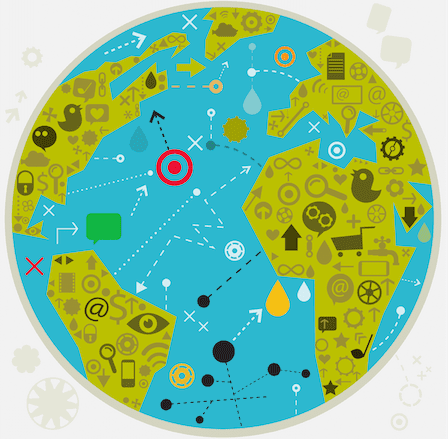How to simplify your website localisation project
 A decade or two ago the extent of most business's online strategies would have been whether or not to bother having a website. Now there are all sorts of things to consider, from social media marketing to optimising for mobile and, if you are looking to reach an international audience, localising your website.
A decade or two ago the extent of most business's online strategies would have been whether or not to bother having a website. Now there are all sorts of things to consider, from social media marketing to optimising for mobile and, if you are looking to reach an international audience, localising your website.
Localisation can be a huge project but there are ways to simplify the process. It can also be hugely important when it comes to reaching new markets. The World Wide Web theoretically puts the whole world at your fingertips but in practice there are cultural and linguistic barriers to overcome.
There's a temptation to think that a single English language website will suffice but numerous studies have shown this is not the case. A survey by Eurobarometer found that only 18% of EU internet users who visited foreign language (typically English) websites said they would frequently buy online in a language other than their own. A more recent survey by independent researchers Common Sense Advisory, meanwhile, found that more than half (55%) of international consumers only bought from websites where information was presented in their own language. For some nationalities, such as the Japanese, this rose to 70%.
Design with localisation in mind
It can greatly simplify your future efforts if you design your website with localisation in mind from the ground up. Keep the bulk of your content relatively simple to allow for easier translation later. This includes avoiding specific cultural references, humour and images that would not necessarily translate. This doesn't mean you should stay away from such content entirely – you want your site to be engaging to whichever audience is viewing it – but these elements should form the peripheries to a simple core message.
In design terms, some tools are better suited to adapting your website at a later time. Using cascading style sheets (CSS), for example, allows you to keep your design elements separate from your content. This means you can switch out translated content without having to redesign each page from scratch. You will also need a flexible character encoding tool such as Unicode UTF-8, which can handle non-Latin scripts such as Hebrew or Arabic, as well as incorporating 'non-standard' Latin characters such as the German Ä, Ö, Ü and ß.
If you already have an English language website it can be just as time-consuming to internationalise it retroactively. Creating a single versatile template can save you time and effort in the long run however. Even if you are only looking to localise for one or two target markets initially, an internationalised main site can give you the flexibility to expand to new markets in the future.
Choose your markets
Full localisation is a major undertaking and it usually makes sense to limit your efforts at first. Google Analytics can let you see the geographical spread of your existing visitors but thorough market research is also essential before making such a commitment.
It's worth noting that some languages can help you make inroads into several different countries and territories. French, for example, is used by large populations in Canada, Belgium, Monaco and Luxembourg, as well as former French colonies in Africa and Southeast Asia while Arabic is widely used throughout North Africa and the Middle East.
It's possible to target your efforts by language but there are usually linguistic and cultural differences between individual countries, even when they share a common language. Targeting individual countries through Google Webmasters Geotargeting will allow you much greater freedom to tailor your content and specific keywords to those particular markets. You can also boost your SEO and give your localised site a more genuinely local feel by hosting it on a country-code top level domain, such as .fr for France.
Localise your content
The most important part of the process is to make sure your website is useful, relevant and engaging to your new target market. If the bulk of your original content is kept relatively simple and universal the translation process will be simplified. Working with native speaking translators you should also be able to add a more local feel to your website, including cultural references where they are relevant. Good translators can also help you to avoid any unintentional cultural faux pas and make sure that the whole website scans naturally for your audience. You should also ensure that elements such as currencies and time and date formats are correct.
Your localised websites do not need to mirror your core English language website exactly. They need to provide the visitor with everything they need but some content is more luxury than necessity. You might feel it important to have your company history, mission statement and a 'meet the team' section on your main website but you might not need to recreate these pages on multiple localised sites.
Identifying influencers can be a lot of hard work, especially as new influencers constantly appear while others fade away. But it can be worth the effort, as reaching out to a relatively small group of key people could have a major knock-on effect to your marketing campaigns.

Thanks to Christian Arno for sharing his thoughts and opinions in this blog post. Christian is the Managing Director of
Lingo24. You can connect on
Google+ or Twitter
@Lingo24 .









